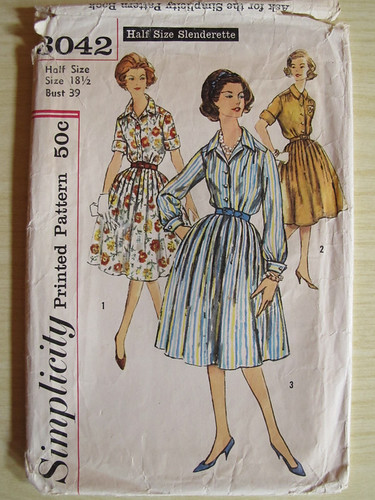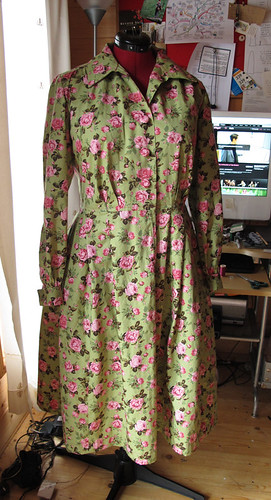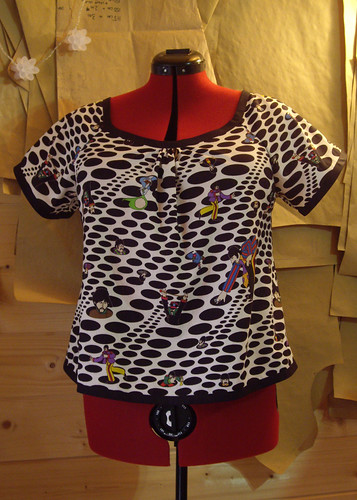I was absolutely convinced I’d blogged about this last summer, but apparently not! Anyway, way back in July or August, my friend Chris sent me a parcel full of knitting patterns. Some I kept, some I passed on to my Mum, but the one that really stood out to me was this one. A probably-1960s raglan cardigan, with a smart cable detail, that should fit over the top of the 1950s dresses I’d been making at the time. One of the problems with new knitting patterns, even vintage-style ones, is that they tend to be very fitted. When you’ve got a dress or a blouse with quite wide sleeves, you need a roomier cardigan to go over the top!

Image © Victoria & Albert Museum
The pattern calls for 18 ounces of double knitting yarn, in my size. That translates to roughly 525 grams, which seemed a little on the light side. I wanted to check on the yardage in those 18 ounces, as it varies from yarn to yarn, and I wanted to make sure I’d have enough. The yardage wasn’t stated in the pattern, so I went online to have a look. I didn’t find much in the way of helpful information, as it turned out – although the V&A do have this lovely shade chart. Remember those? I used to love choosing wool with my Mum, from the little tufty shade charts that she used to keep in the sideboard. Wouldn’t it be nice to have those again now, so that we could see what we were getting before we ordered online?
Anyway, I digress.
What I did find, eventually, was this. The exact wool called for in the pattern, a grand total of 18 ounces, all in the same dye lot, and in absolutely perfect condition! And to top it off, a rummage in the button stash turned up the perfect set. I still can’t believe the serendipity of it!
The thing I still don’t know, sadly, is the yardage of each of those tiny one ounce balls of wool. It’s not stated on the label, so the only thing I can do now is unravel one, and measure it. I might also, for the first time in my knitting life, actually make a gauge swatch and measure that too. Given that I have precisely the amount of yarn called for, I can’t even entertain the possibility of running out. After all, it’s not as though I can pop down to the shops and buy some more!









